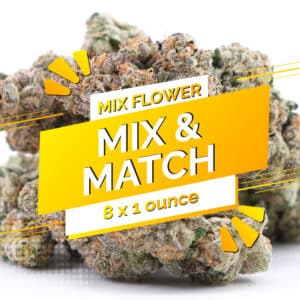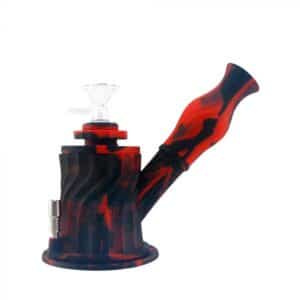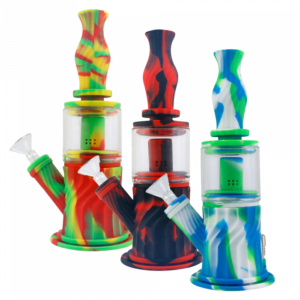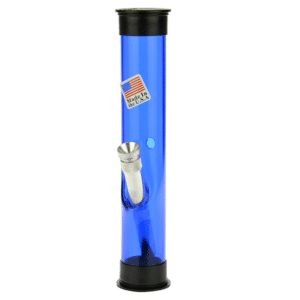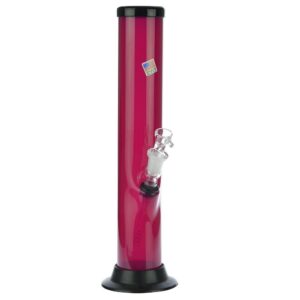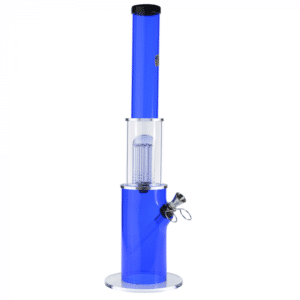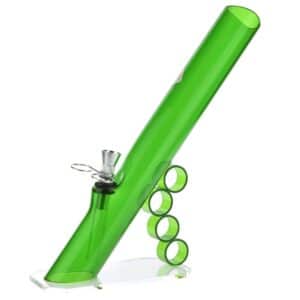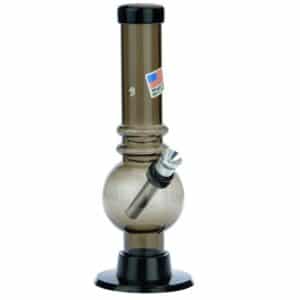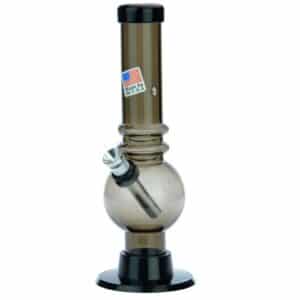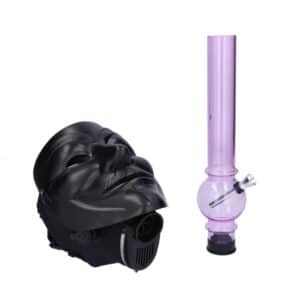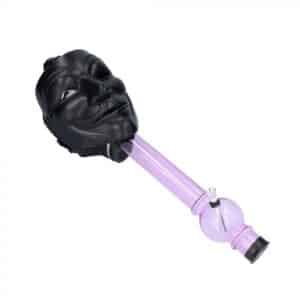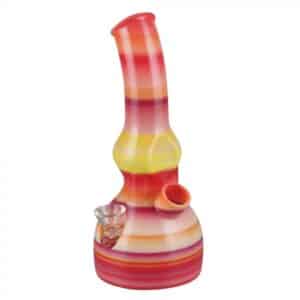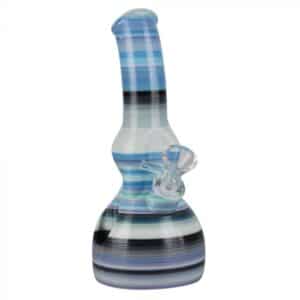Product
Categories
FILTER BY PRICE
-
Sale!0 out of 5
QP of Weed
0 out of 5$600.00Original price was: $600.00.$500.00Current price is: $500.00. Select options -
Sale!0 out of 5
Half Pound of Weed
0 out of 5$900.00Original price was: $900.00.$800.00Current price is: $800.00. Select options -
Sale!0 out of 5
Pound of Weed
0 out of 5$1,500.00Original price was: $1,500.00.$1,300.00Current price is: $1,300.00. Select options
Acrylic and Plastic Bongs
Bongs are a popular way for cannabis enthusiasts to smoke weed. While glass is the traditional material of choice, acrylic and plastic bongs offer unique advantages.
Showing all 11 results
-
3-in-1 Silicone Multifunction Bong
0 out of 5$39.95Original price was: $39.95.$35.96Current price is: $35.96. -
Sale!0 out of 5
4-in-1 Silicone Multifunction Bong
0 out of 5$59.95Original price was: $59.95.$53.96Current price is: $53.96. -
Acrylic Bong with Carb Hole and Straight Tube
0 out of 5$12.99Original price was: $12.99.$11.69Current price is: $11.69. -
Acrylic Bong with Glass Downstem and Herb Bowl | 14.5 mm
0 out of 5$29.99Original price was: $29.99.$26.99Current price is: $26.99. -
Acrylic Bong with Glass Tree Perc and Metal Bowl
0 out of 5$49.99Original price was: $49.99.$44.69Current price is: $44.69. -
Acrylic Mini Grip Bong with Flat Base and Finger Grips
0 out of 5$59.99Original price was: $59.99.$41.99Current price is: $41.99. -
Acrylic Straight Bubble Base Mini Bong with Marias
0 out of 5$15.99Original price was: $15.99.$14.39Current price is: $14.39. -
Anonymous Gas Mask Bong with Acrylic Bubble Tube | Black
0 out of 5$44.99Original price was: $44.99.$40.49Current price is: $40.49. -
Gas Mask Goggle Bong with Bent Tube
0 out of 5$39.99Original price was: $39.99.$27.99Current price is: $27.99. -
Kayd Mayd 3D Printed Gonzo Bong
0 out of 5$49.99Original price was: $49.99.$44.99Current price is: $44.99. -
Silicone Gas Mask Bong with Acrylic Straight Tube
0 out of 5$39.99Original price was: $39.99.$35.99Current price is: $35.99.
Acrylic and Plastic Bongs: A Complete Guide
This comprehensive guide covers everything you need to know about acrylic and plastic bongs.
Key Takeaways of Acrylic and Plastic Bongs
- Acrylic and plastic bongs provide unbeatable durability and portability compared to glass. They resist breaking if dropped.
- Colorful, creative acrylic bong designs stand out. Plastic bongs are also more discreet for low-key use.
- They tend to have lower price points, making these bongs very affordable. Great for beginners.
- Acrylic and plastic bongs are lightweight and easy to travel with. Ideal for on-the-go use.
- Safety depends on quality. Avoid cheap models made with hazardous materials like BPA plastic.
- High-grade acrylic and food-safe plastics create safe, durable bongs when properly maintained.
- Clean regularly to prevent residue buildup that can impact flavor and function. Avoid harsh cleaning chemicals.
- For best results, add an ice catcher and diffuser downstem to any acrylic or plastic bong.
How Acrylic and Plastic Bongs Work
Acrylic and plastic bongs provide water filtration just like traditional glass bongs. They use the same basic components:
- Tube – The main chamber that fills with smoke. Acrylic or plastic instead of glass.
- Base – Holds water to filter smoke as you inhale. Can have unique shapes.
- Downstem – The slanted tube connecting the bowl that bubbles through water.
- Bowl – Holds ground bud. Attach it to the downstem when ready to smoke.
- Mouthpiece – Section where you place your lips to inhale the filtered smoke.
When you ignite the weed in the bowl, smoke funnels through the downstem into the water in the base. As you inhale, it bubbles through water to cool and filter it before entering your lungs.
The key difference is that acrylic bongs and plastic bongs avoid the fragility issues of glass but retain the same percolating functionality.
| Acrylic/Plastic Bong Pros | Acrylic/Plastic Bong Cons |
|---|---|
Durable and portable | Can impact flavor over time |
Affordable pricing | Needs thorough cleaning |
Artistic and discreet | Avoid cheap hazardous plastics |
Lightweight for travel | Not as fancy as glass bongs |
Top 5 Acrylic and Plastic Bong Materials
There are a few common types of acrylics and plastics used to make bongs. Each has its own characteristics:
1. Acrylic
Acrylic bongs are constructed using a plastic polymer material called polymethyl methacrylate (PMMA). Key traits include:
- Durable – Impact and shatter resistant. Won’t crack if dropped.
- Customizable – Acrylic can be tinted any color during production for creative designs.
- Affordable – Less costly than glass while retaining appealing transparency.
- Safe – Non-toxic and hygienic when high quality. Avoid cheap fillers.
Quality matters though. Low-grade acrylic can contain toxic chemicals and degrade over time. Medical-grade acrylic gives the best performance and safety.
2. Polypropylene
Polypropylene (PP) plastic is a popular food-safe, BPA-free choice:
- Heat-Resistant – Can withstand hot water during cleaning.
- Food-Grade – Non-toxic and chemically inert. Safer for smoking.
- Flexible – Polypropylene has some bend and flex to prevent cracks.
- Cloudy Appearance – Not as transparent as acrylic but more durable.
Medical-grade polypropylene plastic provides the best balance of safety and durability for bongs.
3. Polycarbonate
Polycarbonate (PC) plastic has high impact resistance:
- Unbreakable – Nearly indestructible against drops and clangs.
- Built-in Coloring – Vivid integral colors hide resin buildup.
- Lightweight – Lighter than acrylic for maximum portability.
- Scratch-Resistant – Stands up well to regular use and travel.
However, low-quality polycarbonate plastic may contain BPA. Verify the grade before choosing a polycarbonate bong.
4. Silicone
Silicone bongs offer ultra flexibility:
- Soft Feel – Smooth, comfortable silicone texture.
- Increased Grip – Provides good grip even when wet. Won’t easily slip.
- Foldable – Easily folds down or rolls up for storage and travel.
- Heat-Safe – Can withstand very high temperatures.
On the downside, silicone tends to absorb smells and stains over time. Proper cleaning is a must.
5. ABS Plastic
ABS plastic is another common, lightweight plastic option:
- Inexpensive – Among the most budget-friendly plastic choices.
- Easy to Shape – Simple to mold into various bong shapes.
- Color Options – Often available in a spectrum of colors and finishes.
- Easy to Clean – Low maintenance compared to other materials.
But avoid the lowest grade ABS plastics, as they can contain hazardous chemicals. Higher medical grade ABS plastic is safest.
| Material | Durability | Customization | Safety | Price Range |
|---|---|---|---|---|
| Acrylic | Very Durable | Highly Customizable | Good if High Quality | Medium |
| Polypropylene | Durable | Medium Customization | Very Safe | Medium |
| Polycarbonate | Extremely Durable | Low Customization | Questionable | Medium |
| Silicone | Flexible | Low Customization | Very Safe | Medium |
| ABS Plastic | Durable | Medium Customization | Questionable | Lowest |
Plastic vs. Acrylic Bongs Comparison
Plastic and acrylic bongs each offer distinct advantages:
Acrylic Benefits
- Appearance – Glossy transparent finish resembles glass.
- Creative Designs – Can tint colorful patterns into the acrylic.
- Easy to Clean – Smooth non-porous surface doesn’t trap resin.
Plastic Perks
- Durability – Almost unbreakable. Polycarbonate is near indestructible.
- Affordability– Basic plastic designs offer the lowest cost. Great for newbies.
- Lightweight – Easy to hold and carry. Some plastic bongs float.
| Factor | Acrylic Bong | Plastic Bong |
|---|---|---|
| Cost | Affordable | Most Affordable |
| Customization | Total Custom Colors | Limited Colors |
| Transparency | Crystal Clear | Cloudy/Opaque |
| Weight | Light | Lighter |
| Cleaning | Easy | Moderate |
| Safety | Good if High Quality | Questionable Grades Exist |
For most, acrylic represents the best middle-ground. It captures appealing transparency at affordable prices with customization. Medical-grade plastics like polypropylene also offer great safe alternatives.
Acrylic vs. Glass Bongs
Compared to traditional glass bongs, acrylics provide:
Superior Durability – Acrylic bongs are practically unbreakable and resist cracking or shattering if dropped. Glass breaks easily.
Affordability – Simple acrylic bongs start under $20. Equivalent glass costs $60+. Colorful designs run $40-$100 for nearly indestructible quality.
Customization – Any color palette or pattern can be infused into the acrylic material. Glass color options are limited.
Portability – Lightweight acrylic makes transportation easy. Glass bongs are clunky and fragile to travel with.
Discretion – Clear acrylic looks like glass, but colored opaque options are subtle. Glass bongs look conspicuous.
Ease of Use – Plastic handles and mouthpieces with acrylic provide better grip. Glass offers no grip.
However, glass remains superior in certain areas:
- Smooth Hits – The glass surface creates less diffusion. Acrylics can impact flavor.
- Appearance – Glass has a higher-end aesthetic compared to plastic-like acrylic.
- Resale Value – Used glass bongs retain more value. Acrylics have little resale upside.
So acrylic bongs trade off a bit of performance for massively improved durability and affordability. For most buyers, the advantages make acrylic the smarter choice.
Features to Look for When Buying
Certain features help optimize the performance of acrylic or plastic bongs. Prioritize models that offer:
- Diffused Downstem – Percolates smoke thoroughly through the water, cooling hits.
- Ice Catcher – Allows adding ice cubes to chill smoke before inhaling.
- Quality Materials – Medical-grade, lab-certified acrylic or food-safe plastic. No BPA.
- Thick Tubing – Thicker acrylic or plastic minimizes diffusion for smoother hits.
- Water Filtration – Multiple percolators and chambers further filter smoke.
- Quality Seal – A tight seal between joints prevents smoking issues.
- Large Base – Maximizes stability and water volume for filtration.
- Detailed Workmanship – Smooth, flawless manufacturing and painting.
Avoid cheap acrylic or plastic bongs with thin, weak tubing prone to issues. Spending a bit more ensures durability and performance.
How to Clean and Maintain An Acrylic or Plastic Bong
Regular cleaning preserves the function and taste of your non-glass bong. Follow these tips:
- Change water daily and clean the base with mild soap and hot water. Refreshing the water prevents stale smoke.
- Rinse after each use by running warm water through the downstem and tube. This prevents resin buildup.
- Wash parts like the bowl, downstem, and mouthpiece weekly using 90%+ isopropyl alcohol and coarse salt as an abrasive. Never use bleach or solvents!
- Periodically soak the entire bong overnight in iso alcohol and salt. This removesstubborn resin degrading performance.
- Use bottle brushes to access hard-to-reach areas if needed. Take care not to scratch the plastic.
- Rinse thoroughly after cleaning to eliminate all residue before use. This maintains pure flavor.
- Let air dry instead of towel drying to prevent streaks and scratches.
Proper maintenance keeps these bongs looking and hitting like new! Avoid harsh scrubbing or chemicals that can degrade the material over time.
Safety Tips for Using an Acrylic or Plastic Bong
While durable, acrylic and plastic bongs can still pose hazards if misused:
- Inspect for damage – Don’t use cracked or degraded bongs.
- Keep upright – Tip-overs can cause water to spill into the mouthpiece.
- Add water carefully – Overflow can cause choking hazards.
- Test stability – Ensure the bong sits solidly and won’t easily tip.
- Empty water after use and dry thoroughly to avoid mold.
- Handle with care – Don’t drop or expose to extreme heat.
- Research materials – Ensure bongs don’t contain harmful chemicals when produced cheaply.
With proper care and precautions, quality acrylic and plastic bongs provide years of enjoyable, trouble-free use for cannabis enthusiasts.
User Impressions of Acrylic and Plastic Bongs
Many smokers positively rate their experiences using non-glass bongs:
“I was sick of my glass bong breaking, so I bought an acrylic bong online for $40. It hits just as nice and I don’t have to stress about it cracking anymore!”*
“Plastic bongs were a revelation for me. They are so lightweight and portable compared to glass. I can easily throw mine in a backpack and use it anywhere.”*
“The ability to get colorful acrylic bongs with designs is awesome. I feel like I’m showing off a piece of art instead of just another bong.”*
“As a beginner, I wanted something affordable I could use without worry. My $25 polypropylene plastic bong from an online headshop has been perfect. Great value!”*
“Being able to just toss my silicone bong in my bag or even pocket makes smoking on hikes and camping trips so much easier. Don’t need to stress about careful packing.”*
*”Individual results may vary. This reflects personal anecdotes and is not a substitute for direct experience.”
While glass remains the gold standard for some, many consumers find acrylic and plastic models better suit their needs and preferences for an enjoyable smoking experience.
Frequently Asked Questions
Are acrylic bongs safe to smoke from?
High quality, medical- or food-grade acrylic bongs are completely safe. They contain no chemicals or coatings that could leach into smoke. However, low-cost acrylic bongs may cut corners, so verify quality first.
Can you bring a plastic bong on an airplane?
Legally, no, as possession of paraphernalia violates federal law. However, plastic bongs may pass for decorations or other products when kept in carry-on luggage. Travel with them at your own risk.
Why are plastic bongs so cheap?
Basic plastic bongs utilize inexpensive manufacturing methods and cheap plastics like standard ABS. But better models employ safer, medical-grade plastics despite slightly higher costs.
Do plastic bongs get you higher?
Plastic bongs don’t technically get you higher than other materials. However, plastic provides smoother, cooler hits that allow you to take larger rips comfortably. This can result in stronger effects.
How long do acrylic bongs last?
When cared for properly, medical-grade acrylic bongs easily last 5-10 years or more without damage. Their durability and longevity is unmatched.
Can you use rubbing alcohol to clean a plastic bong?
Yes, 90-99% isopropyl rubbing alcohol works well for cleaning plastic bongs safely. Salt helps by acting as an abrasive scrubber. Always rinse thoroughly after cleaning.
Why do bongs turn yellow and cloudy?
Resin buildup causes acrylic and plastic bongs to turn yellow and cloudy over time. Clean regularly with alcohol and salt then rinse to keep your bong pristine.
Can you fix a cracked plastic bong?
Unfortunately, no. Cracks compromise the structural integrity of plastic bongs. The only remedy is replacing cracked components or the entire bong.
Is acrylic or silicone better for bongs?
Acrylic generally performs better. It provides smooth hits without absorbing odors or stains like silicone. Acrylic also allows more artistic designs. But silicone offers more flexibility.
Are plastic bubblers safe?
Yes, provided high-quality, non-toxic materials are used like medical grade polypropylene plastic. Avoid cheap plastic bubblers as smoke has less water to filter through.
The Bottom Line
For an almost unbreakable bong that won’t break the bank, acrylic and plastic models offer the perfect solution. They retain excellent water filtration while eliminating the fragility issues of glass bongs. Just ensure yours is constructed from lab-certified, non-toxic materials to get the best user experience. With proper care and maintenance, acrylic or plastic bongs will provide endless years of smooth, flavorful hits.


